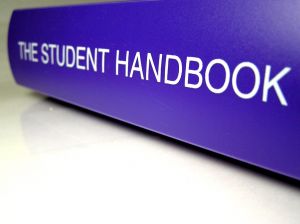The Canadian GIS Education Handbook
Success is a destination for which a clear path must be drawn. As GIS technology is relatively young in the marketplace, today marks a time of expanding opportunities, as well as the challenge for young graduates to define their career paths.
Which institutions should high school graduates seek out for their education? Which programs would offer them the hands-on training necessary to help them on their way to success? Is there a regional variation in the training provided by each institution? These are important questions for any high school graduate, especially a graduate seeking a career in GIS. With these questions looming overhead, there is an opportunity for us to engage with and improve Canadian GIS education across the board.
The publication of a GIS education handbook would be a considerable stride towards facilitating the education of our young graduates. With this tool, students would be able to map out their path of education and set clear goals for success. In order to achieve this, however, we must consider how said handbook would fit into our education system.
What information should this GIS education handbook contain? We already know that this publication would likely be geared towards educators and students alike. Perhaps there should be a comprehensive review of the current Canadian programs that offer GIS education (be it as a core component or a complimentary facet). The handbook could also touch on the essential skills and computer software GIS professionals make regular use of. Depending on which subject bears the brunt of its focus, there may also be variations of this handbook based on region.
Beyond content, there is the issue of cost associated with this project. Who should be funding the publication of this handbook? I asked Dr. Robert Maher (whose presentation at the 2013 Esri User Conference inspired this article), and he suggested that this handbook be funded by both industry and government. This source makes sense to me, as both sectors stand to benefit from a marketplace of well-trained GIS professionals with a clearly defined set of skills.
A combined effort among GIS professionals (and perhaps even professionals in other Geography-related industries) goes further than just managing the costs of production. There is value to having public and private entities come together and create a single publication.
“The problem with having different jurisdictions publish advice, whether it be for Geography or Geographic Information Systems, is that there is no co-ordination,” says Peggy March, the Atlantic representative for the Canadian Council for Geographic Education. “So it’s only by chance that a student picks up these publications.”
I wrote in a previous article about the St. John’s Declaration, and the momentum it can build towards raising public awareness. However, with the positive energy and support the GIS and Geomatics communities can provide to this effort, there is a potential for creating confusion about the different disciplines. I believe that combining the efforts of the GIS community with that of the larger Geography education community can help to better influence those in public office to take action on increasing awareness, and perhaps even aiding in the publication of a GIS handbook as part of the larger initiative. With this combination of support, however, we must be sure that the public is conscious of the distinctions between GIS, Geomatics and Geography. As it was pointed out after my previous article was published, there can be an unintended confusion caused by mentioning these industries in such close proximity to one-another, without emphasizing what distinguishes them from one-another. In this case, would we benefit more from having GIS education be a single chapter in a larger Geography education handbook that provides a comprehensive analysis of carers in all fields relating to Geography?
Regardless of the scope of this project, having education information in a handbook would only be a single component of an improved GIS education system. Creating Summer Institute programs for GIS educators, undergoing a comprehensive curriculum review of post-secondary GIS educational programs and establishing regional GIS educational networks would ideally accompany this tool, and were also recommended in Dr. Maher’s presentation. There is a growing need for a greater understanding of how our students are being educated, nationwide.
Luckily, we not only have an opportunity to improve the infrastructure of our industry’s education, but we also have the means to interact with GIS students and professionals alike. That in mind, we would like to ask you what you think. Do you feel that publishing a GIS education handbook could better serve students and educators in the GIS community? If so, what insight do you feel would have been beneficial to you throughout your education? And finally, who do you think should fund this project?







The idea of a single point of access for information on geography and GIS education/training in Canada is a good one. My understanding is that prospective students spend considerable time and effort searching for appropriate educational pathways, and a comprehensive directory of information would make that process easier. I am not so sure that a student guidebook would “improve Canadian GIS education across the board”. In order to do that, the authors of the publication would have to take on a more comprehensive review of training programs than the reviews already being conducted by educational institutions themselves. College programs are required to have industry and government advisory panels which continually review programs for relevance in the market place. Internal quality review processes already exist within educational institutions. Perhaps a comprehensive student guide book or detailed directory of education/training programs would identify regions of the country where geography/GIS education is lacking, or where there is redundancy and “oversupply”, which would aid institutions in there planning of program offerings.